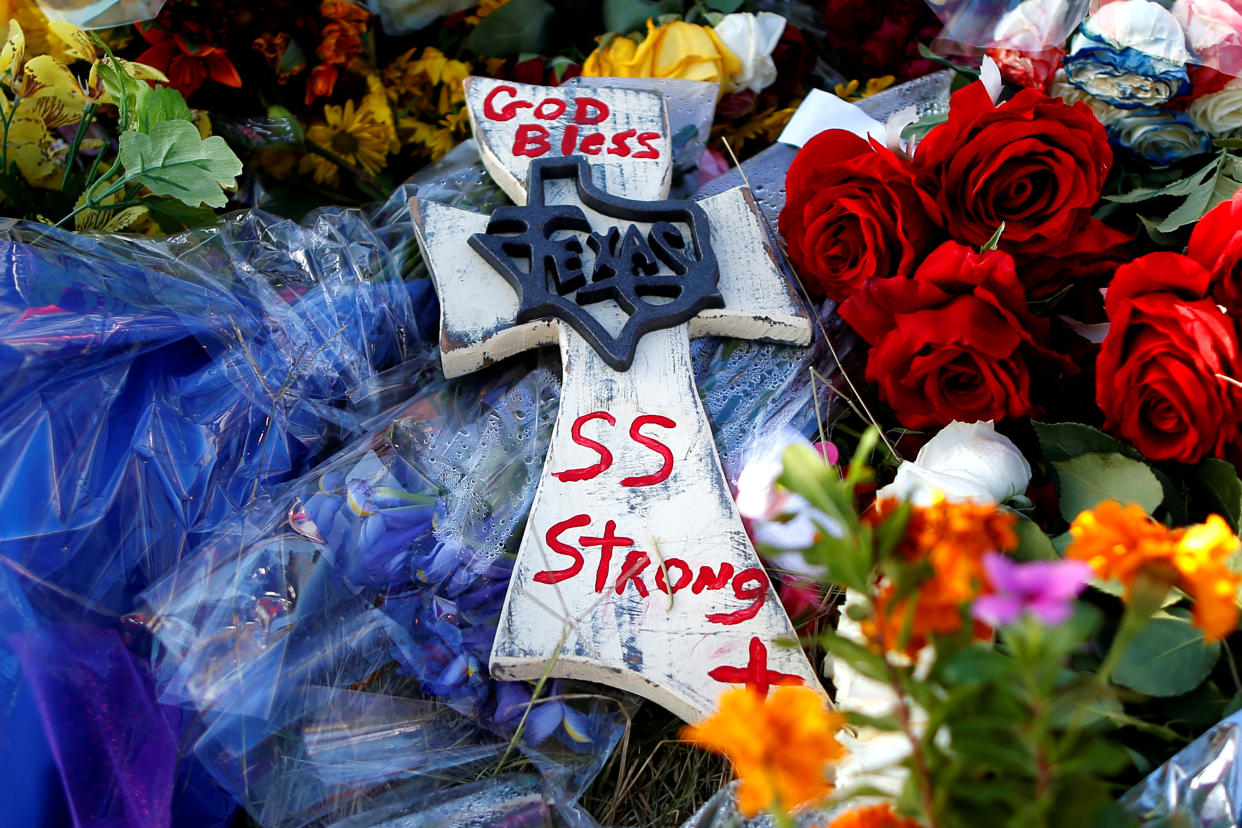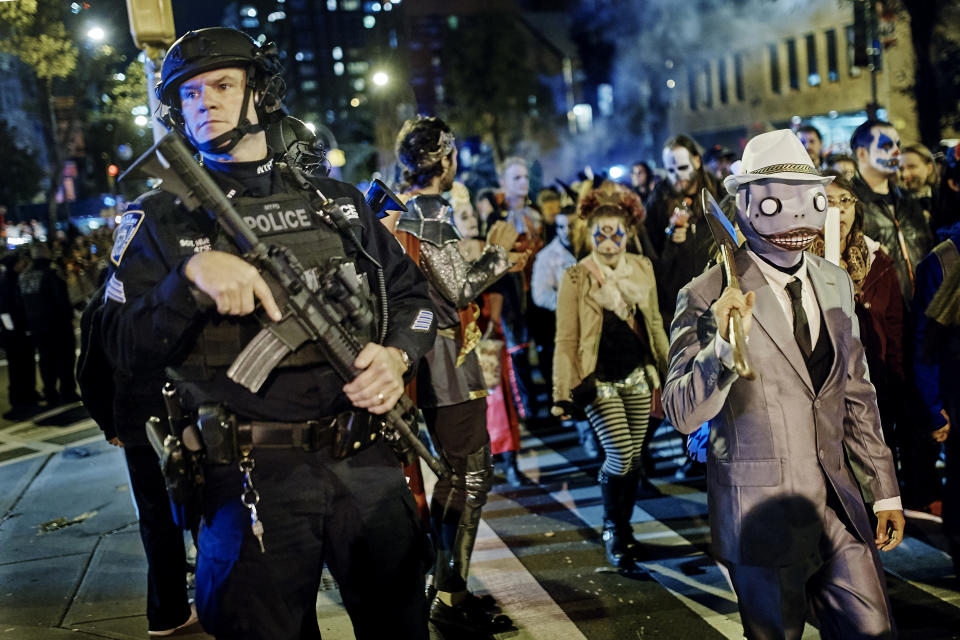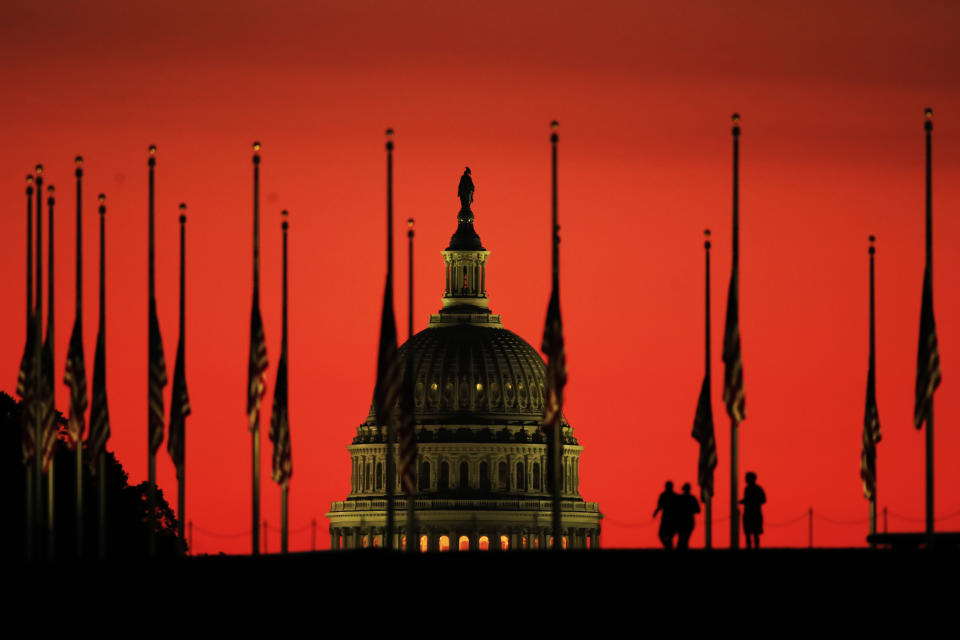Resilient, or just numb? As atrocities mount, Americans become adept at moving on

There is a melody to national tragedy, to national grieving. It starts with shock, segues to fear and anger, crescendos with memorials and tributes, then codas into vows to never forget. The notes are similar from one rendition to the next, but the tempo, the distance from beginning to end, is never exactly the same. And it’s the rhythm, the speed, that’s the true measure of a country’s psyche.
Lately, Americans have been playing a quickened, shortened tune.
We were transfixed for months after Oklahoma City and 9/11, for weeks after the Boston Marathon, and more like days after San Bernadino. We watched the Columbine memorial services live, knew the faces of the Newtown children, but probably can’t name the victims of Sutherland Springs. The nation paid the family of each 9/11 victim $3.1 million; those injured in Orlando and Las Vegas started GoFundMe accounts, and many struggle to pay their medical bills.
“It’s like it never happened,” wrote Amanda Getchell in the Washington Post last week of her life after she fled the fusillade of bullets from the Mandalay Hotel. “My phone stopped ringing with concerned calls and text messages. … The mourning lasted a day, and then everyone forgot about what happened in Las Vegas.”
And in lower Manhattan, not far from the 9/11 Memorial, the Guardian described the scene on Halloween this way: “Within hours of Tuesday’s Home Depot truck attack more than a million New Yorkers poured back on to the streets for the annual Halloween parade, and countless thousands of other kids and their parent-minders were out trick-or-treating in their neighborhoods. By Wednesday morning, nearby schools that had been in lockdown during the attack were open for business. …”

The popular word for this insta-back-to-normal phenomenon is “resilience,” and it is used with pride. “This was a cowardly act of terror,” New York Mayor Bill de Blasio tweeted less than 24 hours after the attack. “It was intended to break our spirit. But New Yorkers are resilient. We will be undeterred.”
Resilience, though, is a symptom: a muscle that develops with overuse, a coping mechanism that hews close to various degrees of resignation.
“Resilience requires being able to contain certain emotions that would otherwise overpower you,” explains clinical psychologist Alon Gratch, “and denial involves exactly the same thing.”
Gratch has been musing on this duality a lot lately. Israeli-born but working in New York for 38 years, he wrote a book, “The Israeli Mind,” and he sees Americans following the mental path that Israelis started down decades ago.
During the two waves of infitada, roughly from 1987 to 2005, there were periods of daily terrorist attacks. “There was just no way to cope with other than to just go on living,” Gratch says. “You clean up the blood and go on.” Israelis took pride in the fact that a café targeted by a suicide bomb in the morning would be back in business by nightfall, and that people continued to ride buses in the face of frequent attacks.
In part, Gratch says, Israelis coped by offloading the role of honoring and memorializing the dead to the government. In his book he calls this the “grief industrial complex,” the hero worship of victims by officialdom “which allows people in day to day life to ignore it and move on.” By quickly transforming events into history and treating the dead as part of a national narrative, violent loss becomes “oddly normalized, a story of sacrifice for a cause that feels like a story.”
And so it is in the U.S. as well. The news alerts bing, the cable coverage begins, there is speculation as to motive, and interviews with partisans who declare either that that immigration restrictions would not have prevented this or that it is too soon to talk about guns, depending on the emerging portrait of the killer. There are vignettes about the dead, hashtags — #bostonstrong, #vegasstrong — and a candlelight vigil. A celebrity organizes a concert. The motions become familiar.

“Congress is already doing what it sees as its part,” Congressman Steve Israel wrote in a New York Times op-ed last month after the Las Vegas shooting spree that left 58 people dead. “Flags have been lowered, thoughts and prayers tweeted, and sometime this week it will perform the latest episode in the longest-running drama on C-Span: the moment of silence. It’s how they responded to other mass shootings in Columbine, Herkimer, Tucson, Santa Monica, Hialeah, Terrell, Alturas, Killeen, Isla Vista, Marysville, Chapel Hill, Tyrone, Waco, Charleston, Chattanooga, Lafayette, Roanoke, Roseburg, Colorado Springs, San Bernardino, Birmingham, Fort Hood and Aurora, at Virginia Tech, the Washington Navy Yard, and the congressional baseball game practice, to name too many.”
Somewhere in this cycle, a prominent public official declares — despite all past evidence to the contrary — that the nation will always remember. “They were mothers, fathers, sisters and brothers,” Donald Trump said in Las Vegas. “They were husbands and wives, and sons and daughters. They will be dearly missed, and they will never be forgotten.”
For individuals, Gratch says, this way of coping is a good thing. “It’s necessary to face it and then move on,” he says,. “Otherwise you become paralyzed and then paranoid. You amplify the dangers and overreact to them.”
He tells of a colleague who closed an office above Grand Central Terminal after 9/11, believing it was a logical terrorist target. Gratch, however, remained in his space near Grand Central, feeling it was important for him and his patients to face down the fear. “The best treatment for anxiety is exposure, small, steady doses of what you are afraid of so you can increase your tolerance,” he says, and in that way, the rash of public violence in the U.S. in recent years has been a perverse national experiment in cognitive behavioral therapy.
But this treatment works because it creates the feeling of taking back control, and that element seems lacking in the current national tableau. Instead, legislators and advocates describe being reminded with each attack of how ineffective attempts at change have been over the years. Choose your reason: a hopelessly polarized society, a political system shackled by special interests, leaders who choose party over country. … Whatever the cause, the result is a growing realization that grief and outrage do not lead to change. Those who see the solution as fewer guns recall assault bans that did not pass after Sandy Hook, and the bill to ban ‘bump stocks’ that has been stalled in Congress. Those who think stricter control of the borders is the answer note that their promised wall has not been built, and courts have blocked all attempts at a virtual “extreme vetting” version.

Is the result a resignation that accounts for the quickened pace of moving on from tragedy? Is what looks like resilience really helplessness mixed with depression? And if so, what is the long-term cost to the national psyche?
“The paralysis you feel right now — the impotent helplessness that washes over you as news of another mass slaughter scrolls across the television screen,” is how Connecticut Sen. Chris Murphy described the phenomenon after Sutherland Springs. Its effect, he warned, is to make the fight exhausting and futile, to numb citizens into dropping their demands for gun control.
“We are suffering from combat fatigue,” agrees Nikki Stern, an essayist and author who was executive director of Families of 9/11 and who says her cause is now gun control. “We’re being pummeled into accepting this as normal. We must fight that.” But, she adds, she is not exactly sure how.
“If I could figure out how to get through, I’d probably have a peace prize to put on my shelf,” she says.

______
Read more from Yahoo News:
Eyewitness to church shooting: ‘I don’t know what we do now’
Online sermons give glimpse into close community of Sutherland Springs church
Air Force admits it failed to report Texas shooter’s conviction for abuse
Photos: Deadly mass shooting at Sutherland Springs, Texas, church
Photos: Vigils, memorials and prayers after the Sutherland Springs, Texas, church massacre


